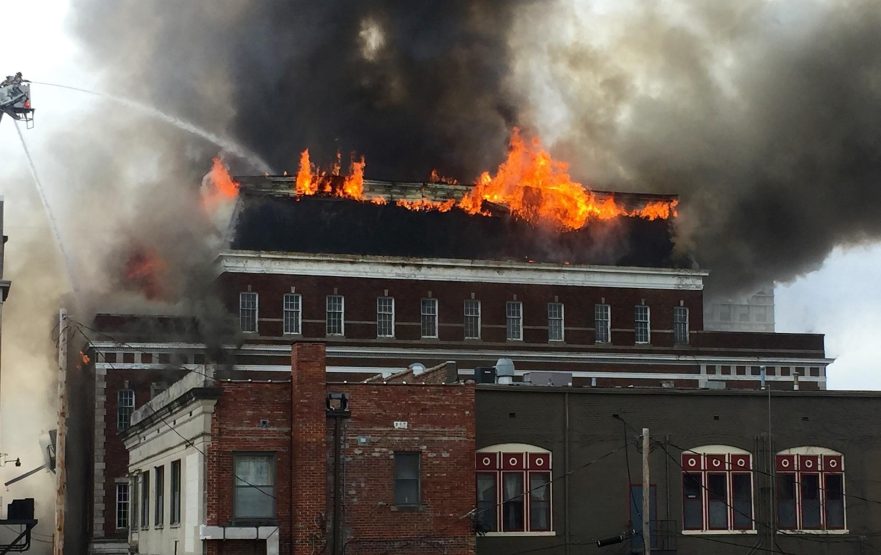Cannabis cultivation and manufacturing are major operations. Aside from requiring considerable amounts of expensive and specialized equipment, cultivation and manufacturing are usually marred with lengthy licensing processes requiring stringent environmental impact reviews and facility requirements. Further, cultivation and manufacturing are at particular risk of fire, whether from instituting insufficient controls, poor electrical work or flawed connections, natural disasters (namely wildfires), or crime. This article analyzes fire risks in cannabis cultivation and manufacturing and discusses how those risks can be minimized through fire safety planning.
The Different Causes of Fire at Cannabis Facilities
The threat of fire is all too real for cannabis cultivation and manufacturing. In 2020, multiple Oregon-based cultivation operations were destroyed in wildfires. In April of 2021, a Washington-based cultivator and manufacturer, Rogue Raven Farms, suffered a three-alarm fire at their facility and have yet to restart operations. Another Washington-based cultivator, Sun Kissed Cannabis, was destroyed in a fire in November of 2021 and permanently closed its operation. More disturbing is an instance of arson that occurred in a British Columbia dispensary earlier this year in February.
The risk of wildfire is easier to understand given it is a natural disaster and out of operator control. Arson can be included in the overall spectrum of cannabis crime and accounts for an exceedingly small percentage of that crime. But the Rogue Ravens Farms and Sun Kissed Cannabis fires do not have a known cause but are both suspected to have been due to the failure of fire suppression systems.
How Can Cannabis Business Operator’s Outfit their Facilities for Effective Fire Safety?
Cannabis legislation gained serious momentum after the 2016 election. When states began their legal cannabis programs, few, if any, fire safety standards existed for any sectors of commercial cannabis. Since then, fire safety standards in commercial cannabis have moved in leaps and bounds. Notably, as of May 2021, the National Fire Protection Association (NFPA) has published the NFPA 420, Standard on Fire Protection of Cannabis Growing and Processing Facilities. While the industry applauds this advancement, it is impractical to assume operators can easily retrofit their facilities. While operators work to bring cultivation and manufacturing facilities up to code – and of course, there will come the requirement that all such facilities meet this code – operators can mitigate fire risk by following recommendations from the NFPA and the Society of Fire Protection Engineers (SFPE):
- Understand your facility: Knowing the facility in fine detail will allow operators to create effective ingress, and egress routes, and provide a solid foundation off which to create a fire prevention plan.
- Look for carbon dioxide hazards: Grow rooms are often filled with carbon dioxide (CO2) to help the plants grow faster and more robust, but the compressed CO2 systems pose a serious fire risk. Additionally, excess CO2 poses a danger to workers. Fail-safe CO2 detection systems are key to maintaining safe levels of CO2 in grow room environments.
- Get the right sprinkler system: Cannabis plants can grow very tall, which can obstruct the sprinkler system. Operators must consider plant height and lighting before deciding on an appropriate sprinkler system.
- Check for sulfur dioxide damage: Fumigation uses sulfur dioxide (SO2) to abate powdery mildew. SO2 can be corrosive when present with water vapor, which can damage CO2 detection systems and other equipment. Proper ventilation in grow facilities can mitigate this risk.
- Processing fire suppression: Processors use CO2 and solvents to create cannabis extractions. Even with closed-loop extraction systems, the release of gas occurs every time the system is opened to retrieve the extracted material, known as off-gassing. Additional fire suppression should be considered for extraction rooms, as well as a hazardous exhaust system.
- Inspections: Cannabis operators typically modify buildings to fit their needs and may make additional modifications once they have passed inspection. The issue is not having the modifications inspected and approved, as operators might be using unapproved equipment or have exposed fire risks, such as exposed spray foam. Operators should always consult with local municipalities to ensure their facilities and equipment are inspected and approved when modified.
As the NFPA 420 gains momentum, there is likely to be a decrease in fires resulting from poor suppression and controls. Further, as codes are advanced to consider commercial cannabis, operators will also be held with greater accountability should a fire occur because of fire suppression and/or control failure. Aside from instituting a robust emergency response plan for facility employees, the SFPE recommends posting facility maps at a location visible to firefighters, as well as working with local fire departments to pre-plan responses. Because, as with all potential risks that come with operating commercial cannabis, preparation is key.
How Can Sapphire Risk Help?
Tony Gallo and the team at Sapphire Risk Advisory Group have worked with hundreds of cannabis cultivators and manufacturers across the United States and are familiar with the operational needs of these businesses to prevent fires. Follow us on social media to stay up to date with the cannabis industry news for cultivators and manufacturers!
- 3D Dispensary Security Tour
- Natural Medicine Security Plan for Colorado Psilocybin Application

- New Jersey: Cannabis Consumption Area Application

- Cannabis in the US Virgin Islands

- Case Study: New Jersey Cannabis Retailer

- Delivery Vehicle Security

- Crime Prevention Through Environmental Design (CPTED)

- Schedule III: Cannabis Regulatory Disruptions Ahead

- Perfect Your Delaware Cannabis Business License Application With a Security Consultant

- Our Story: Sapphire Risk Advisory Group

